NASJE member Dr. Jan Bouch recently completed her certification as a Conversational Intelligence Coach. Her capstone project, C-IQ Transformational Competencies Mapped to ICF Core Competencies, was selected for presentation at the August 2019 graduation. Dr. Bouch, a Professional Certified Coach (PCC) and owner of the Justice Coaching Center, is also certified to use Checkpoint 360, an instrument that assesses 70 core competencies and is used as a tool for development of others.
Blog
-
Meet NASJE Member Isabel Alvarez Galeano
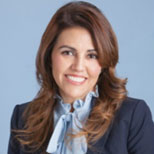
Isabel Alvarez Galeano Welcome to Isabel Alvarez Galeano of Connecticut!
What was your path to judicial education?
Early in my career with Judicial as a Child Support Enforcement Officer, I was part of their outreach program where I went to the community to educate people about the services provided by the agency; this volunteer program helped me to discover my passion for education. Later, as the Coordinator of the Multicultural Affairs Unit for Court Support Services Division, one of my duties was to deliver trainings and to facilitate conversations about social issues, which prepared me for my new position with the Employee Education and Development Unit.How long have you worked at your organization?
I have been working for the Connecticut Judicial Branch for 14 yearsIf you could do another job for just one day, what would it be?
A prosecutor in a high profile caseWhat do you like to do when you are not at work?
Rotary International acts of serviceWhat is your favorite movie?
I am a cinephile I do not have a favorite one. I really like historical and based in real life films. -
Margaret Allen is 2019 Thorson Award Honoree
Margaret R. Allen of the National Center for State Courts was announced as the 2019 Karen Thorson Award winner at NASJE’s Annual Conference in October in Denver. The Thorson Award goes to a NASJE member who has made a significant contribution to both NASJE and judicial branch education nationally and is NASJE’s highest recognition of excellence and contributions to the field of judicial branch education. Ms. Thorson was the first recipient of the eponymous award in 2012.
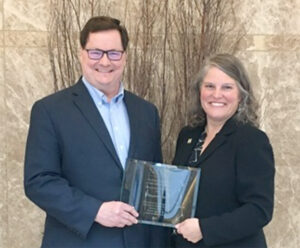
Margaret Allen receives NASJE’s Karen Thorson Award from President Dr. Anthony Simones at the 2019 NASJE Annual Conference Ms. Allen currently serves as the Director of National Programs at the National Center for State Courts (NCSC), where she collaborates with existing and new partners to deliver Institute for Court Management (ICM) educational offerings around the country, including Court Management Program (CMP) courses, online courses, and other standalone, customizable programs. She is also involved with updating the CMP courses, creating new course offerings, and providing assistance to partner states, Consortium states, licensees and others, including but not limited to our very own NASJE and National Association for Court Management (NACM) and the International Association for Court Administration (IACA) associations. She previously worked for the Ohio Courts as a judicial educator.
Ms. Allen’s service to NASJE is exemplary. She has held, and continues to hold, positions on several NASJE committees, and served as NASJE president in 2015-2016. She continues to be a co-facilitator of NASJE’s Fundamentals course, thereby ensuring our newest members have the foundational tools necessary to become the best possible judicial educators. Ms. Allen has taught, supported, or facilitated classes at every NASJE conference she has attended, and is a frequent presenter at NACM and other conferences as well.
Ms. Allen is a special educator who genuinely cares about education and the development and sustainability of judicial branch education. She has a passion for education and cares deeply about people, making her a valuable friend who freely and sincerely provides counsel, critique, and friendship to those who know her.
Upon receiving the award Margaret said, “I have grown into my self-hood in this profession and found the joy that we all seek. As the saying goes, those who do what we love, don’t work a day in our lives. And I think you’d agree that it is enormously gratifying to be able to serve our fellow citizens in this important way.”
NASJE is proud of Ms. Allen’s contributions to the field and honored that she continues to humbly serve the organization and the profession. Congratulations, Margaret!
-
From the President (Fall 2019)
What’s the “J” got to do with it?

NASJE President Janice Calvi-Ruimerman For my first letter from the president, I feel it is important to negate a common misconception about our organization. I heard most recently someone describing me as, “she no longer does judicial education.” Interesting, I thought, then what do I do? Granted, I moved from Judges Education to Employee Education and Development in 2015, thereby expanding my audience type from approximately 180 constitutional officers to approximately 4000 Judicial Branch employees. However, I, as most of us, began my career in the law and then in education of the law. Subsequently, I migrated to what I now understand to be some form of legal education, having an impact on the courts or judicial overall. However, I still have no idea what “Judicial Education” means and I guess this is where the misconception starts. So I asked. According to Merriam-Webster, “the word [Judicial Education] you’ve entered isn’t in the dictionary.”
So I ask again, what is it that I have been doing all these years?
I’ll start with the basics. Merriam-Webster states that, “the term ‘judiciary’ is also used to refer collectively to the personnel, such as judges, magistrates and other adjudicators, who form the core of a judiciary (sometimes referred to as a ‘bench’), as well as the [staffs] employees who keep the system running smoothly. In some countries and jurisdictions, the judicial branch is expanded to include additional public legal professionals and institutions such as prosecutors, state lawyers, ombudsmen, public notaries, judicial police service and legal aid officers.”
So, it seems, if given that definition of judiciary, according to Merriam-Webster, anyone in the business of educating not only the “bench”, but also judicial employees, i.e. “[staffs] employees who keep the system running smoothly,” would be considered judicial educators. Additionally, if I read further on, anyone in the business of educating “additional public legal professionals and institutions such as prosecutors, state lawyers, ombudsmen, public notaries, judicial police service and legal aid officers,” should also be considered judicial educators. Thus, the expansion of education of the judiciary also would expand our role as judicial educators. So, how does this fit with the organization and who, then, should be included in our organization? As we are all familiar with, “the National Association of State Judicial Educators (NASJE) … strives to improve the justice system through judicial branch education. (emphasis added). NASJE is a leader in defining the practice of judicial branch education and in gathering and sharing resources among educators.” Therefore, by definition NASJE includes all judicial branch education / educators. Paired with Merriam-Webster’s definition above, we have expanded exponentially “to include additional public legal professionals and institutions such as prosecutors, state lawyers, ombudsmen, public notaries, judicial police service and legal aid officers,” as those individuals or organizations we serve in the role of educator.
To quote Dr. Anthony Simones, the 2018-2019 president, “what a special profession we are a part of!” The inclusive nature of our jobs affords us the opportunity to have a large impact on the legal system overall, and makes us uniquely poised to expand our audience types accordingly. The National Center for State Courts in their summary document on Institute for Faculty Excellence in Judicial Education states that “Judicial education plays an important role in the healthy functioning of a state’s judicial system by providing opportunities for knowledge and skills development as well as enhancing personal and professional growth.” We are so impactful, less we forget, as we move through the many offices of the judiciary, that each of us in our work as judicial educators, whatever that title represents to you, have made and continue to make a meaningful difference in the administration of justice.
With this shift in title and definition in mind, I challenge each of us this year to develop a new normal, a better definition, a larger perception of what we do, resulting in a more inclusive membership. It will be a shift in culture, and for some, the shift will be difficult for others seamless but for all of us it is necessary. Judicial Education has evolved and with the progression of our profession comes a philosophical change. Our jobs and our role in NASJE is much more expansive, so, my friends, let’s keep growing!
In conclusion, I thank you for all that you do and remain honored to be a judicial educator. The gratitude I feel in being part of this amazingly talented group of educators is overwhelming. Finally, I am extremely humbled to have been chosen as your president and I look forward to the next eleven months and beyond.
Together, we can change this misconception and create a new culture of Judicial Education.
-
Pat Murrell Leaves Lasting Impression on Judicial Education
By Lee Ann Barnhardt
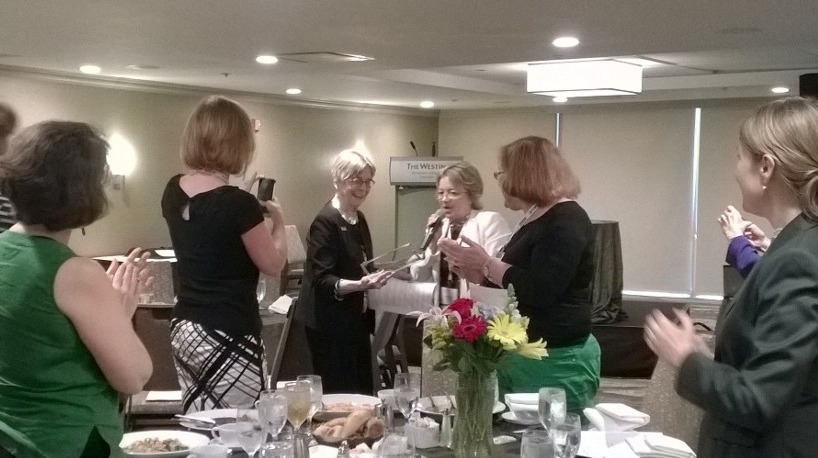 It is not often that we meet someone who has a significant impact on our lives. I was lucky to have met that person in Patricia Murrell. Pat left this world on October 25, 2019, but her passion and commitment to judicial education lives on in all who have had the privilege to learn from her or teach with her.
It is not often that we meet someone who has a significant impact on our lives. I was lucky to have met that person in Patricia Murrell. Pat left this world on October 25, 2019, but her passion and commitment to judicial education lives on in all who have had the privilege to learn from her or teach with her.I was introduced to Pat in 2005, one week after accepting a position as a judicial educator in North Dakota. She was teaching an adult learning class on David Kolb’s experiential learning model at the annual NASJE Conference. The following year a team from North Dakota attended her Leadership Institute in Judicial Education at the University of Memphis. That experience helped shape my knowledge of adult learning and development and forever changed the course of judicial branch education in North Dakota.
Pat gave us a new definition of leadership that we still follow today. Through her programs and encouragement we have a Justices Teaching Institute for civic engagement, a strategic plan for education, and ongoing faculty development for judges and staff.Pat retired from the University of Memphis in 2014. Upon her retirement, NASJE member Kelly Tait wrote, “On a broad scale, she instilled the principles of adult development and learning in judicial branch education. On a more personal level, she ensured participants’ deep consideration of the importance of competence and character.” Later that year, she was awarded the Karen Thorson award from NASJE, which was established to honor a member who has made a significant contribution to both NASJE and judicial branch education nationally.
It is hard to quantify the impact Pat has had and continues to have on our profession. She was a scholar, a pioneer, a leader, a teacher, a coach, and a mentor, but most of all she was a friend. Pat was known for quoting educator and author Parker Palmer and I would like to use his words to honor Pat’s life and her impact on me.
“I love being in the company of strangers, who always turn out to be kin as I learn more about their stories and what they care about. In their company, I feel more deeply at home among the rich diversity of life that inhabits this good earth.” – Parker Palmer.
Pat made me feel at home at that first NASJE conference and in this field of judicial education. For that, I am forever grateful.
Pat’s Obituary
Patricia Jane Hillman Murrell, 83, died October 25, 2019. The daughter of Adam Byrd Hillman and Mary Lessie Walton Hillman, she was predeceased by her husband, Dan Stewart Murrell, and her brother, Adam Byrd Hillman, Jr. She is survived by her two children, Dan Hillman Murrell (Vicki) of Memphis and Susan Patricia Murrell (Dennis Stephens) of Gorham, Maine; two grandsons, Cody Murrell of Houston, Texas and Sallis Murrell (Lena) of Macon, Georgia; a sister, Rosemary Hillman Hopkins (Oliver); five nieces and nephews; and two great-grandchildren, Flora and Lazarus Murrell.
Born in Neshoba County, Mississippi, Pat grew up in the Be Better community, graduated Union High School and Millsaps College, and received master’s and doctoral degrees from the University of Mississippi. She taught in several elementary schools; in the U.S. Armed Forces Institute in Wurzburg, Germany; at George Mason University; and at the University of Virginia’s Northern Virginia Center. In 1970, she joined Memphis State University (now the University of Memphis) as its last Dean of Women. There, she was professor of counseling and a member of the Center for the Study of Higher Education. She also directed the Leadership Institute in Judicial Education and the Institute for Faculty Excellence in Judicial Education, receiving several awards. This work in continuing education for judges also brought her recognition as a founder of the International Organization for Training Judges and as an international consultant for judicial education.
Pat taught in the Department of Leadership at the University of Memphis until her retirement as Professor Emerita in 2014. She was recognized as one of the University’s 100 most inspirational women during its first 100 years. She served on the boards of Memphis Planned Parenthood and Theatre Memphis and was a longtime member of St. Luke’s United Methodist Church.
The family wishes to thank Pat’s devoted caregivers, Tonya Anderson, Dyanne Saulsberry, and Florida Smith.
A memorial service will be held at 10 AM on Saturday, November 2 at St. Luke’s United Methodist Church in Memphis, and the family will receive visitors afterwards.
The family requests that memorials be made to the Patricia H. and Dan S. Murrell Law Faculty Enrichment Fund at the Cecil C. Humphreys School of Law at the University of Memphis (supportum.memphis.edu/murrellfund), Planned Parenthood, Theatre Memphis, St. Luke’s, or a charity of the donor’s choosing.
-
The Great Jury Conversion: From User Manual to User Friendly
By April Turitto and Kim Larson
Since the Business Education & Support Unit (BESU) was created in 2013, we’ve worked to continuously improve statewide education and training materials for Minnesota Judicial Branch employees, judicial officers, and the public. Over the last two years, the BESU took on the task of converting a decades old user manual to a more user-friendly format.
Why Change the User Manual
We chose to work on the jury user manual while analyzing training needs for the upgraded jury system. As we looked through existing training materials, we realized that all the materials were in need of updating. Instead of simply editing the existing materials with the system upgrade, we proposed a broader update to modernize all jury materials for statewide users.
The new format needed to be easy to find, use, and maintain. We decided an online format would best meet those needs, aligning our activity with Minnesota’s goal paperless courts.The Original Manual
The existing Jury User Manual detailed all the processes users could perform in the state’s jury management system broken down by topic. The original manual was a 268-page Word document consisting of mostly paragraphs of text with several screenshots of the application. It was available on the court’s intranet site as eight chapters, a single Word document for each chapter.
Although the manual was a comprehensive collection of information, it was difficult for users to find information, especially if they weren’t familiar with jury processes. It was also a challenge for trainers working with new employees to pick out the specific items they needed during training.
Collaborating for Success
The jury manual was the main resource for jury users around the state. Converting the format after so many years would affect hundreds of people, so we had to make sure that nothing was lost. To ensure that all important information remained intact we worked closely with jury subject matter experts (SMEs), some of whom were the authors of the original manual. Initially, they were nervous about making such a large change to how we recorded jury processing information. They had spent years creating and maintaining the manual, and in turn had taken on a high level of responsibility and ownership for this information. The collaboration between training experts and jury experts made it easier to guarantee that the converted materials covered the information in such a way that was complete and accurate, yet still easy to use.
Another stakeholder group, the Jury Management Resources Team (JMRT), was also nervous about this change because of the impact it could have on their work as jury experts in their locations. They were very comfortable finding information and resources in the existing jury manual, and they were concerned that a new format would slow them down. They were also concerned that statewide users would have a hard time making the switch and would be frustrated with the change.
To help ease JMRT’s concerns, we provided regular updates and previews of the new manual well before finalizing the conversion. We gave them several opportunities to submit feedback, which made it easier for us to create a product that would best suit the end user. As we got closer to releasing the new format, having seen the progress and what the final product would look like, stakeholders were excited for the change and couldn’t wait for completion. Many members of the team agreed that the new format would make it much easier to train new employees because the layout followed the actual path of managing jurors and cases.
The Conversion Process
The actual conversion consisted of many hours combing through the manual and grouping information and processes into logical sets. We started with the main topics that pertained to the majority of jury system users, like how to summon jurors or postpone service. After picking out the larger topics we were able to look at less common practices and decide how to handle them. We eventually converted all the information into these formats:
- Quick reference guides – These outline step-by-step processes with numbered steps and screenshots.
- Application overviews – These contain screenshots of the main screens with notes on how to navigate the system.
- Handouts – These cover information that require more explanation than a quick reference guide does. They use a paragraph format with bullet points and numbering to make things easier to follow.
- Indexes – These list similar items with rows or columns that include brief descriptions. We use these to summarize things like reports, and they usually contain the report names, brief descriptions, location information, and other details.
- Frequently Asked Questions – This question and answer format works well for documenting less common practices or items that don’t fit well into broader topics.
The New Jury eGuide
The result of the conversion process is a product we call the Jury eGuide. It is a webpage that we designed to look like a table of contents, and when someone clicks on a title it opens the relevant document. For example, if someone clicks on Searching for Jurors and Cases, the quick reference guide opens with all the search-related steps. It organizes documentation based on how processes occur during the jury management life cycle, which makes it easier for trainers to use with new employees. Since each document is very specific to a certain topic or task, users no longer need to sift through paragraphs of text to find what the need. Instead, the links take them directly to a short, user-friendly resource for the specific task they are performing.
What’s next?
As we look to the future, BESU is exploring ways to get away from document-based materials altogether. Creating and maintaining webpages instead of document libraries will be more efficient and more in line with the way users process information in their daily lives.
Sample from Original Jury Manual

Screenshot of Current Jury eGuide
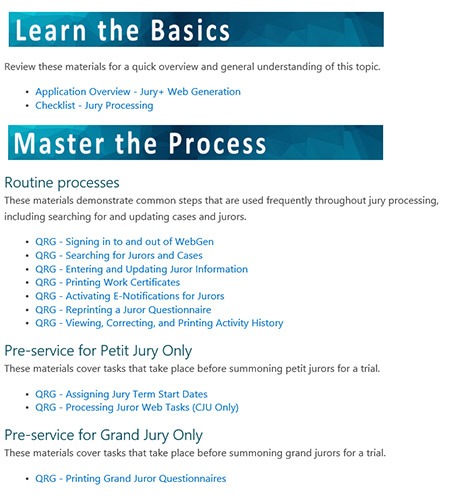
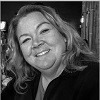 Kim Larson has worked at the Minnesota Judicial Branch since 2007, and has been the manager of the Business Education and Support Unit since 2013. Prior to joining the Judicial Branch, she worked as an attorney with Mid-Minnesota Legal Assistance representing clients in family law cases, housing disputes, immigration, and civil and disability rights. Kim is a Fellow of the Institute for Court Management through the National Center for State Courts and is a graduate of Mitchell Hamline School of Law in St. Paul, MN. Kim is passionate about finding innovative and creative ways to present information to judicial officers and court staff in support of their day to day work.
Kim Larson has worked at the Minnesota Judicial Branch since 2007, and has been the manager of the Business Education and Support Unit since 2013. Prior to joining the Judicial Branch, she worked as an attorney with Mid-Minnesota Legal Assistance representing clients in family law cases, housing disputes, immigration, and civil and disability rights. Kim is a Fellow of the Institute for Court Management through the National Center for State Courts and is a graduate of Mitchell Hamline School of Law in St. Paul, MN. Kim is passionate about finding innovative and creative ways to present information to judicial officers and court staff in support of their day to day work.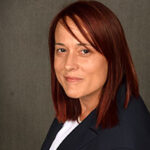 April Turitto is a first-year law student at the University of St. Thomas School of Law in Minneapolis, Minnesota. Before going to law school, she worked as a Training and Development Specialist for the Minnesota Judicial Branch where she received a 2019 Achievement Award for her work on transforming the jury program training materials. When she’s not immersed in her studies, you can find April relaxing by the lake with a puzzle book and a diet root beer.
April Turitto is a first-year law student at the University of St. Thomas School of Law in Minneapolis, Minnesota. Before going to law school, she worked as a Training and Development Specialist for the Minnesota Judicial Branch where she received a 2019 Achievement Award for her work on transforming the jury program training materials. When she’s not immersed in her studies, you can find April relaxing by the lake with a puzzle book and a diet root beer. -
From the President (Summer 2019)

NASJE President Anthony Simones For my final presidential message, I am going to focus on gratitude. Never have I been more aware of the fact that great things do not happen with a single person acting alone. To those who helped me through this year, I bestow upon you my gratitude.
First, I want to publicly acknowledge the special group of individuals on the NASJE Board of Directors I have been able to work with over the past year:
- Lee Ann Barnhardt, my friend and mentor, the person who taught me how to be an effective judicial educator, who has been there for me at every stage of my journey;
- Janice Calvi, different from me in so many ways, but my touchstone-the amazing person who gets so much accomplished behind the scenes and without seeking to grab the spotlight;
- Nancy Smith, my fellow swimmer, the brilliant analyst who has been a treasure trove of careful thought, wise counsel, witty observations and wonderful support;
- Jeff Schrade, the nicest guy I know and the “answer man,” the person whose judgment guides our financial decisions and whose common sense forms the foundation of our approach to almost every problem;
- Ileen Gerstenberger, who has impressed me ever since she taught the Foundations of the Profession course at my first conference, who responded affirmatively when I asked her to come and be a part of history;
- Jessica Foreman, the wonderful, eclectic hipster genius who came out of nowhere to mastermind the Austin conference and affect us all in so many ways;
- Crystal Banks, someone who likes to laugh almost as much as I do, a giant of the profession who answered the call when I needed someone to take over the Northeastern Director position in mid-stream;
- Todd Brower, a true Renaissance Man whose accomplishments and credentials are matched only by his commitment to others and his desire to bring justice to the world;
- Dan Rettig, the one whose quips and smirks cannot obscure how much he cares and how committed he is to being there for the people who depend upon him.
Thank you all. The accomplishments of the past year are attributable to your creativity, tirelessness, insight and support.
In addition, I want to acknowledge the group of individuals I asked to be co-chairs of committees. I know from experience that running a committee takes strategic thinking, organizational skills, the capacity to interact effectively with others, a commitment to getting things done and pushing through exhaustion to make things happen. Thus, I want to commend:
- Katheryn Yetter and Elizabeth Watkins-Price, who responded beautifully to my challenge to make the Futures Committee a major player in moving NASJE forward;
- Claudia Fernandes and Caroline Kirkpatrick, whose leadership of the Fundraising Committee created an effective path toward one of our most important endeavors, the NASJE conference;
- Lynne Alexander and Nancy Smith, whose work on the Communications Committee made our online presence consistently excellent;
- Jennifer Juhler and Dana Bartocci, the team from the Midwest who provided impressive leadership for the Diversity, Fairness and Access Committee;
- Lee Ann Barnhardt and Sara Dahl, whose leadership of the Membership and Mentor Committee produced essential information through the survey of NASJE members;
- Thea Whalen and Janice Calvi, who took over a committee that matters very much to me and made the Education and Curriculum Committee better than ever.
- Jennifer Mendoza chaired the Conference Planning Committee. A long line of impressive people have held that position in the past. They all marveled at the skills Jennifer exhibited in planning the upcoming conference.
I would also like to thank all the NASJE members I approached about joining specific committees and applying their considerable talents in particular areas. I made committees a priority in my presidency and the dozens of people to whom I reached out were an essential part of making this a successful endeavor.
I want to thank Lee Ann Barnhardt, Margaret Allen and Kelly Tait for being a mentor to me as I pursued this path in NASJE. I want to thank the past presidents I reached out to on a regular basis over the past year. I want to thank Janice Calvi for being a constant source of advice and support.
And I want to thank all of you who have contacted me with notes of support and encouragement. It made a difference.
I am grateful for this extraordinary opportunity and this remarkable organization.
-
Nominations Sought for NASJE Officers
At the annual conference in October, NASJE’s newest Board members will be sworn into office. Candidates are recommended by the membership to NASJE’s Nominating Committee, chaired by Past President Lee Ann Barnhardt. Other committee members (representatives from each region) include Allison Gallo (Delaware), Ben Barham (Arkansas), Tom Langhorne (Utah), and Margaret Allen (Ohio).
Ms. Barnhardt also serves on the Diversity, Fairness and Access Committee, and all committee members are tasked with promoting diversity of the slate of candidates. The committee will be reaching out to the membership requesting recommendations for individuals who might serve in NASJE leadership positions.
The Nominating Committee assesses members’ interest in serving and assures those nominated or voicing interest are qualified to serve. The Vice President position is always on the ballot, but this year, terms also expire for the Western Regional Director and Northeast Regional Director. Do you know a member who would serve the organization well? Are you interested in serving? Your input, in one way or another, is important. Keep in mind that you may nominate yourself, and please consider reaching out to the Nominating Committee. The deadline for 2019 nominees is August 2.
Appendix B, NASJE Board Resolution 1, in NASJE’s Constitution and Bylaws provides the guidelines for nominations. Details related to the duties and responsibilities of each position are found in the Policies and Procedures. After reviewing that information, if you have questions about serving or need a copy of the nomination forms, please contact Lee Ann Barnhardt.
-
Two Webinars for NASJE Members Announced
On July 17 and July 30, 2019, NASJE’s International and Diversity, Fairness, and Access committees are sponsoring webinars available to all NASJE members. Information on the
webinars is below, registration is available on the members only page.Educating the Judicial Branch in Latin America
On Wednesday, July 17, 2019, at 1:00-2:15pm Eastern, please join NASJE’s International Committee for a webinar titled “Educating the Judicial Branch in Latin America: Conversation with Leonel.”
Join a lively discussion with our international colleague, Leonel Gonzalez, IOJT Deputy President of South America and Director of Centro de Estudios de Justicia de las Américas (Chile). We will learn about approaches to judicial branch education in Colombia, Guatemala, Argentina and other Latin American countries.
Unpacking Dr. Robin DiAngelo’s White Fragility – A NASJE Webinar
NASJE’s Diversity, Fairness, and Access Committee invites you to join a them on Tuesday, July 30, 2019, at 1:00pm Eastern for a webinar on the work of Dr. Robin DiAngelo.
Talking to the majority social group about racism is often fraught with hostility, guilt, and shame. Most educators from a majority social group who teach fairness have “never had to bear witness to the pain of racism experienced by people of color” according to Dr. Robin DiAngelo.
During this webinar, we will examine the work of Dr. DiAngelo on dealing with the defensiveness and related reactions and moves by majority persons that appear in discussions of racial issues and racism and that hinder meaningful cross-racial dialogue.
After this webinar, participants will be able to:
- Identify the misconception of racism;
- Recognize how privilege can contribute to the oppression of others;
- Manage defensiveness, denial, and deflection in fairness education; and,
- Mindfully manage defensiveness, denial, and deflection in yourself.
-
NJC and JSI Release Science Bench Book for Judges, Offer Webcasts
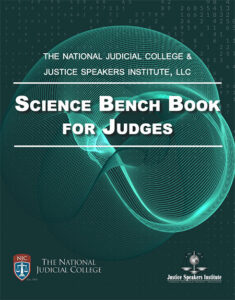 Judges are the guardians of our system of justice, but forensic developments in the last 50 years have made their jobs significantly harder. However, judges do not need to become scientists in order to make appropriate evidentiary decisions about scientific evidence. Rather, they need to have a detailed understanding of their role in admitting scientific evidence.
Judges are the guardians of our system of justice, but forensic developments in the last 50 years have made their jobs significantly harder. However, judges do not need to become scientists in order to make appropriate evidentiary decisions about scientific evidence. Rather, they need to have a detailed understanding of their role in admitting scientific evidence.To achieve this, the National Judicial College and the Justice Speakers Institute are pleased to present a new online resource, Science Bench Book for Judges, to assist judges in making their rulings.
To help understand the book, several of the distinguished authors of the Bench Book will deliver eight webcasts in July, August, and September, with the first occurring on July 9. Thanks to funding from the State Justice Institute, the Bench Book and the webinars are offered at no cost to judges.
Please invite your judges to join the webinars. All webinars are at 12pm Pacific/3pm Eastern and will last 75 minutes. For more information, visit the NJC website.